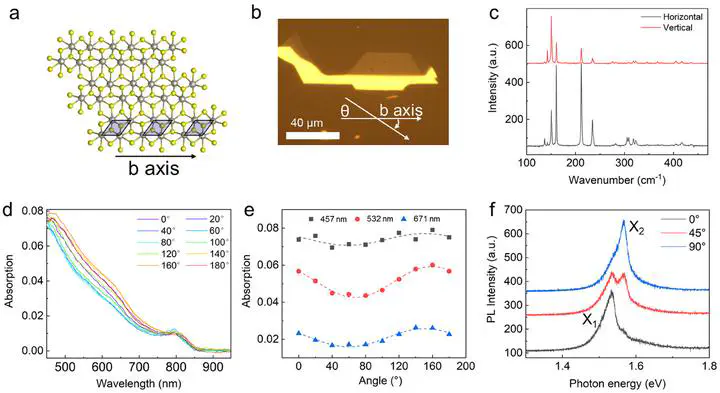Graphene/h-BN/ReS2 Heterostructure Operating in Fowler−Nordheim Tunneling Regime for Polarization-Sensitive Fast Photodetector

Abstract
On-chip polarization photodetectors are crucial for advancing optical communication, which is facing the challenges of limited polarization sensitivity and hard on-chip integration. 2D materials offer unique opportunities for creating high-performance polarization photodetectors thanks to their intrinsic anisotropy and extensive heterostructure design freedom. Herein, a graphene/h-BN/ReS2 tunneling heterostructure is designed to realize a high-performance polarization photodetector in the Fowler−Nordheim tunneling (FNT) regime. Specifically, the photodetector achieves a high photocurrent signal-to-noise ratio of ≈103 by suppressing the tunneling dark current with the hBN tunneling layer. The h-BN also creates a strong electric field, which accelerates the photogenerated carriers and achieves a response time of ≈70 µs. Such a high signal-to-noise ratio and short response time are over two orders of magnitude stronger and shorter than those of field-effect transistor-type ReS2 photodetectors. Moreover, in the FNT regime, the contribution of an anisotropic tunneling barrier and effective hole mass can effectively enhance the photocurrent dichroic ratio to exceed the intrinsic absorption dichroic ratio of 1.61, achieving the maximal value of 1.85. The enhancement mechanism is well understood by the consistent experimental and theoretical results. This study provides a viable approach to designing high-performance on-chip polarization photodetectors by utilizing the characteristics of the FNT regime.